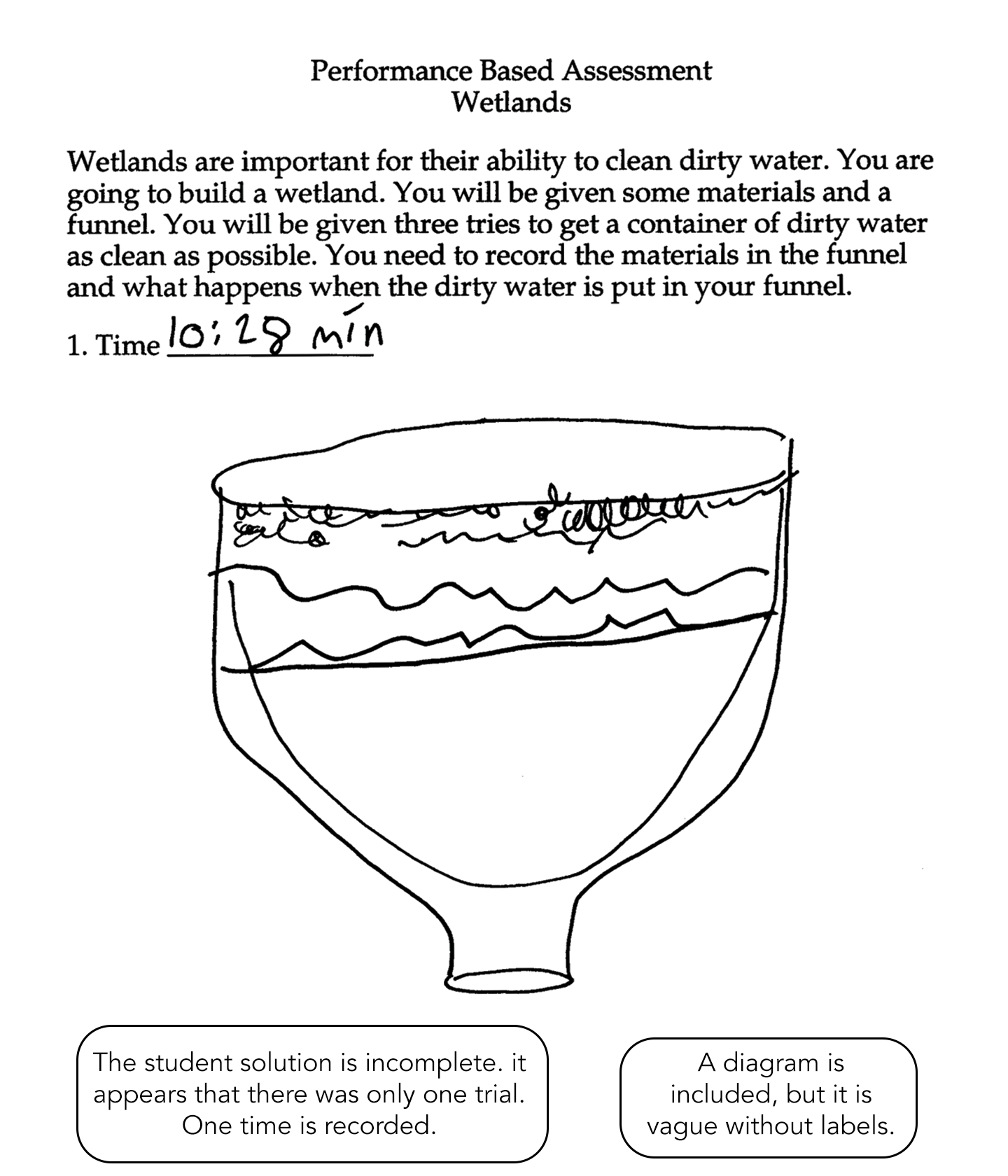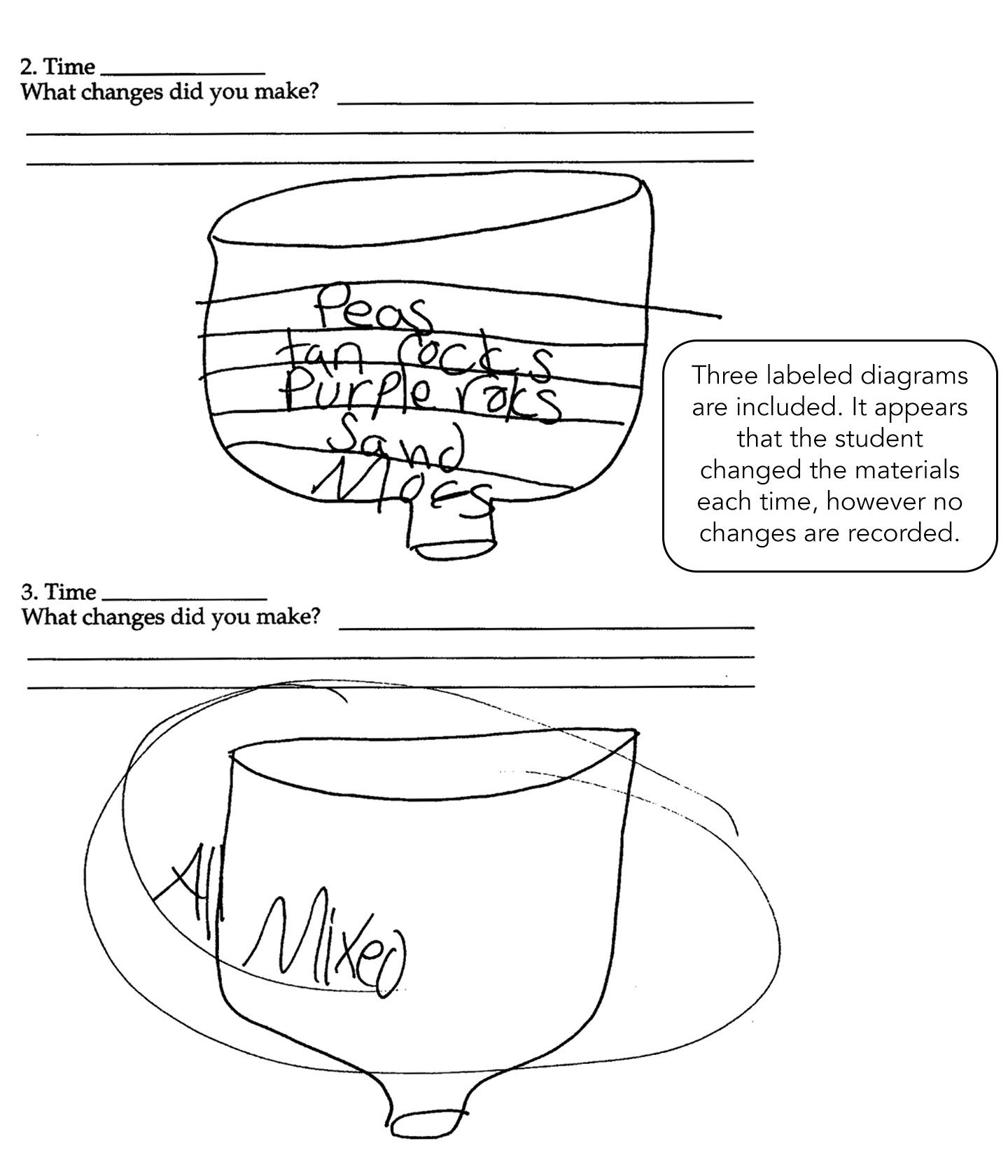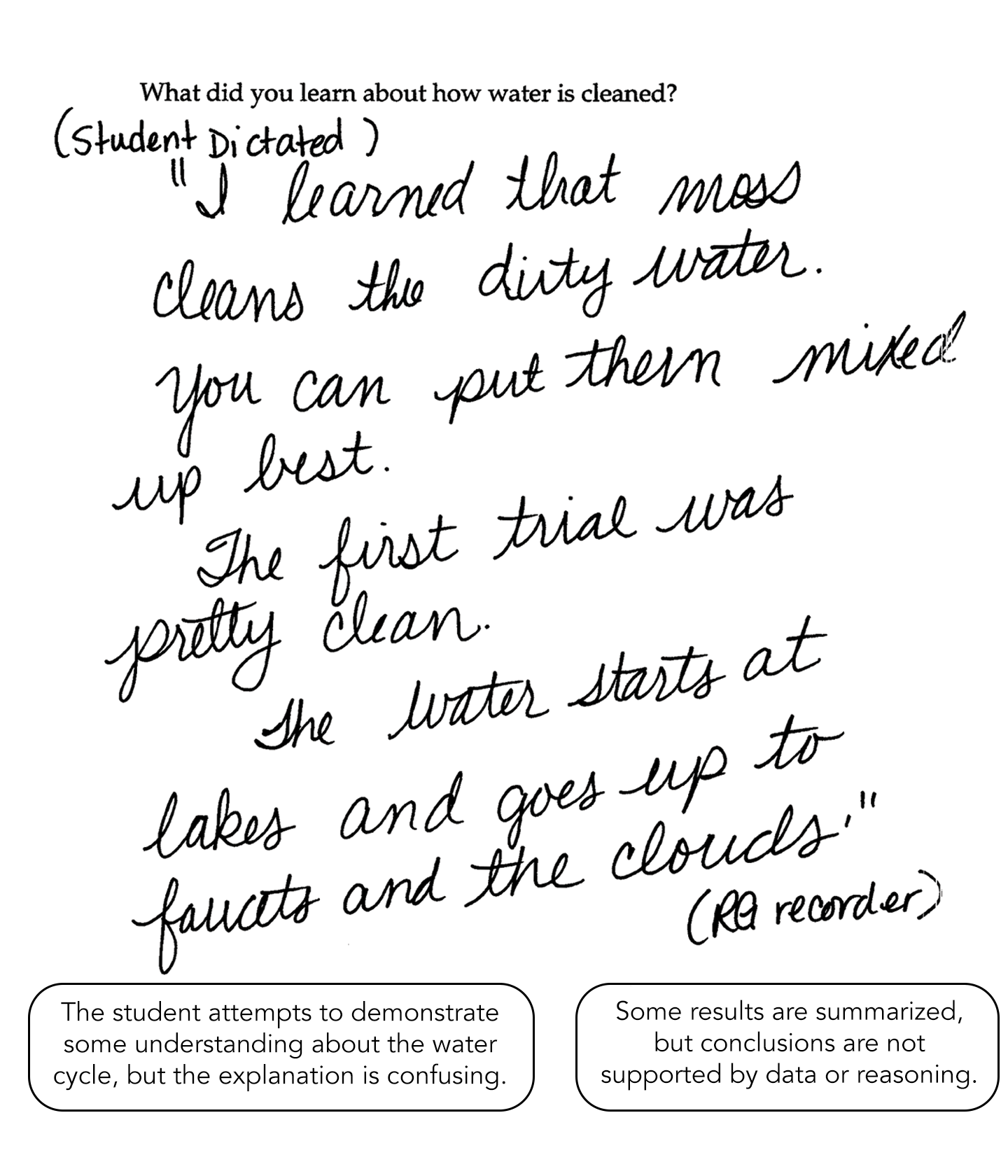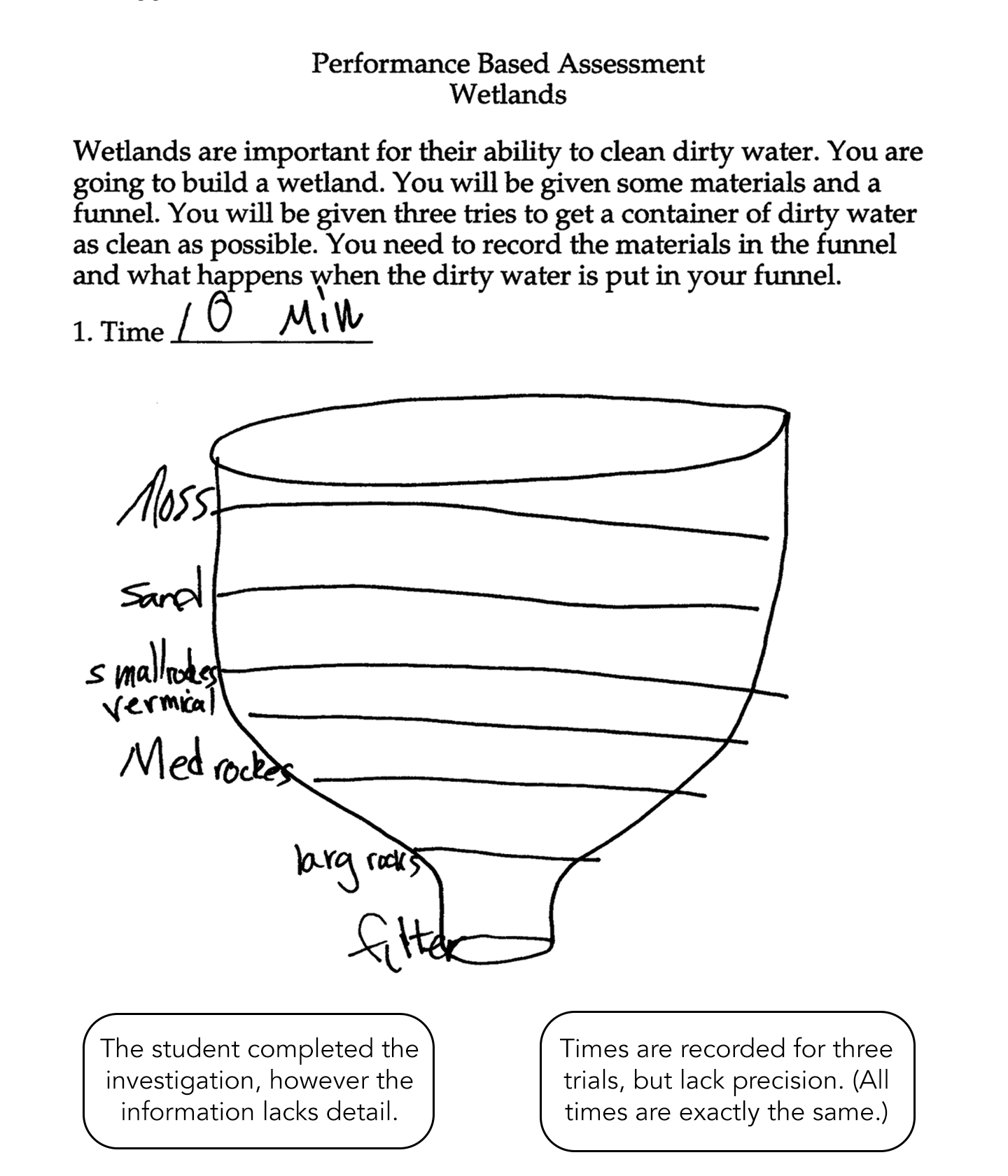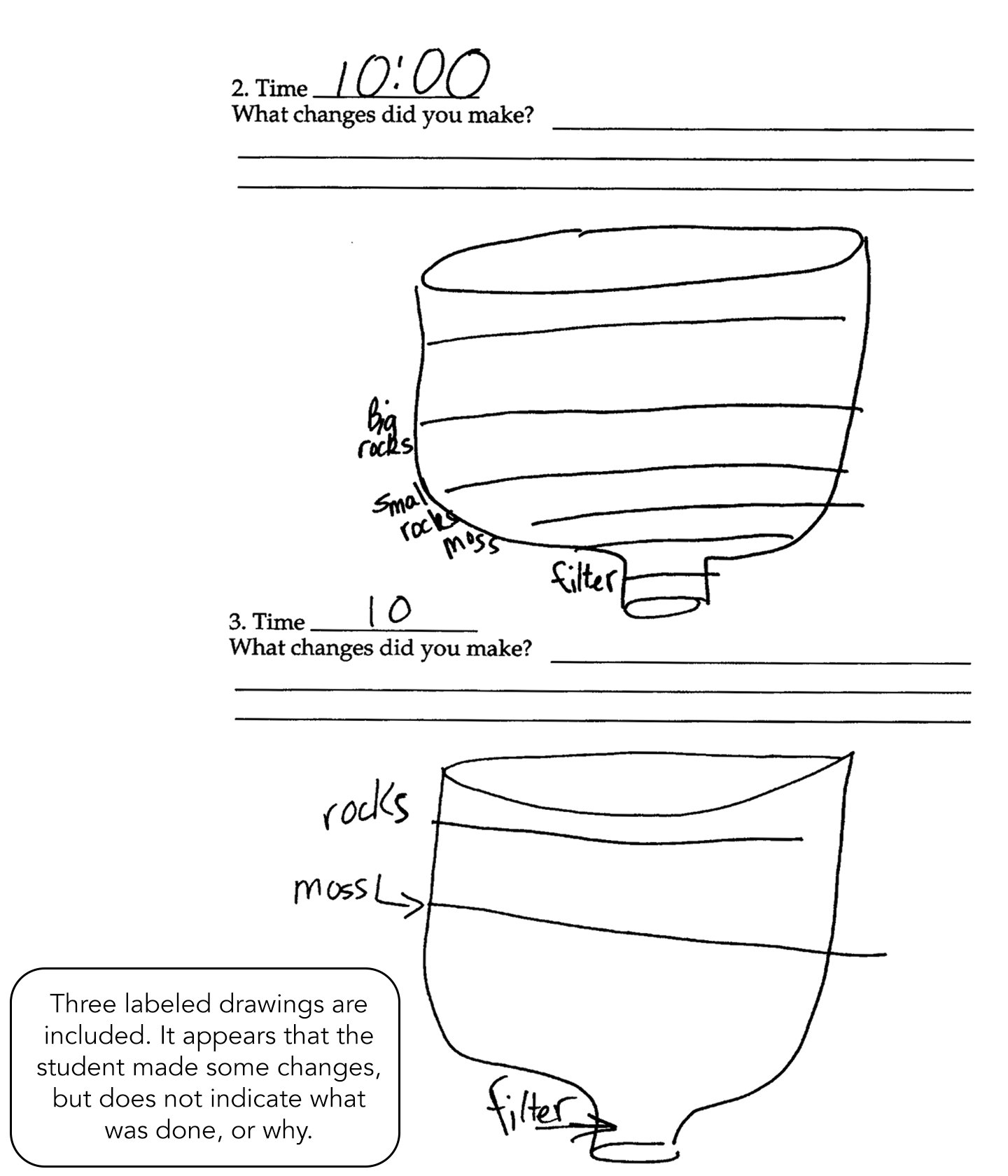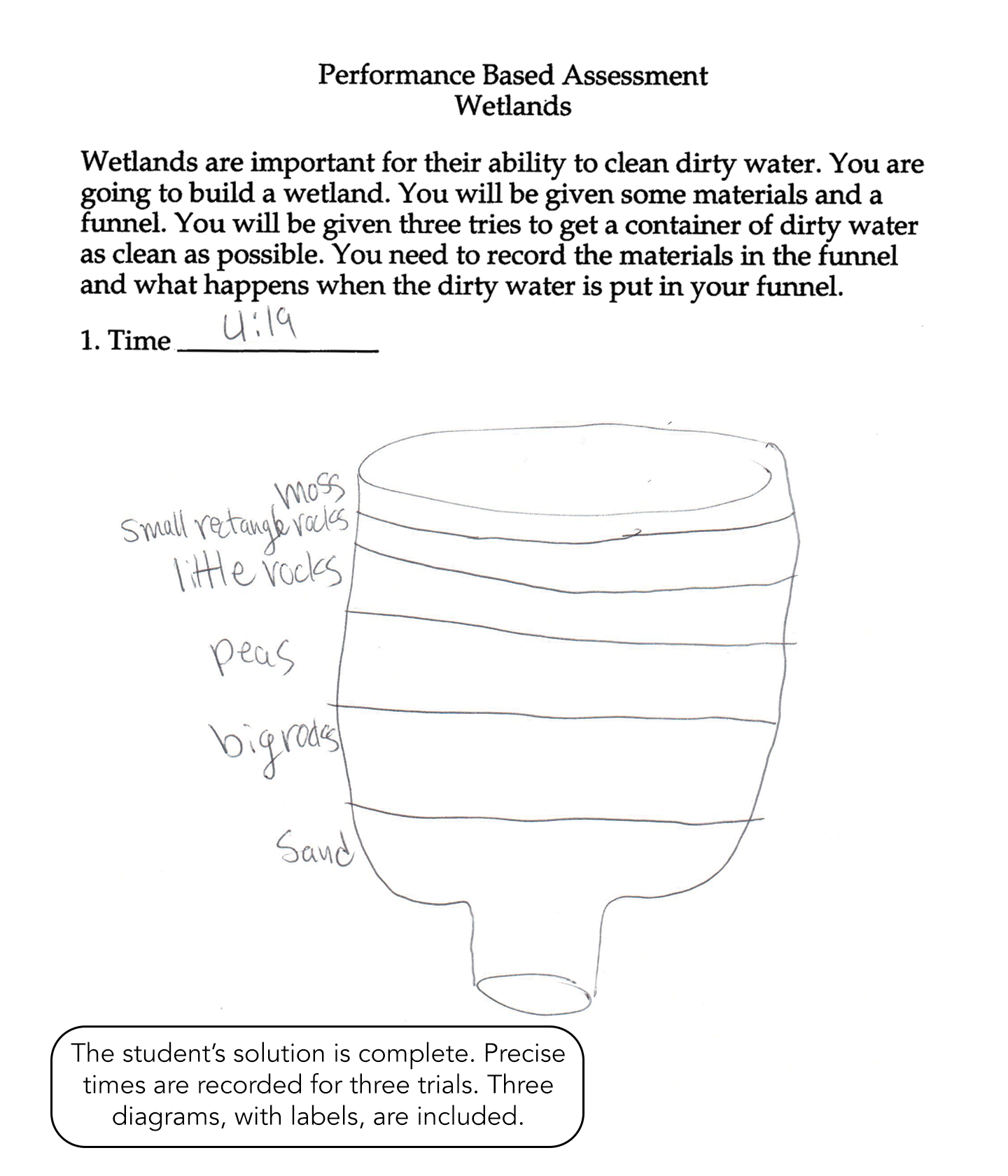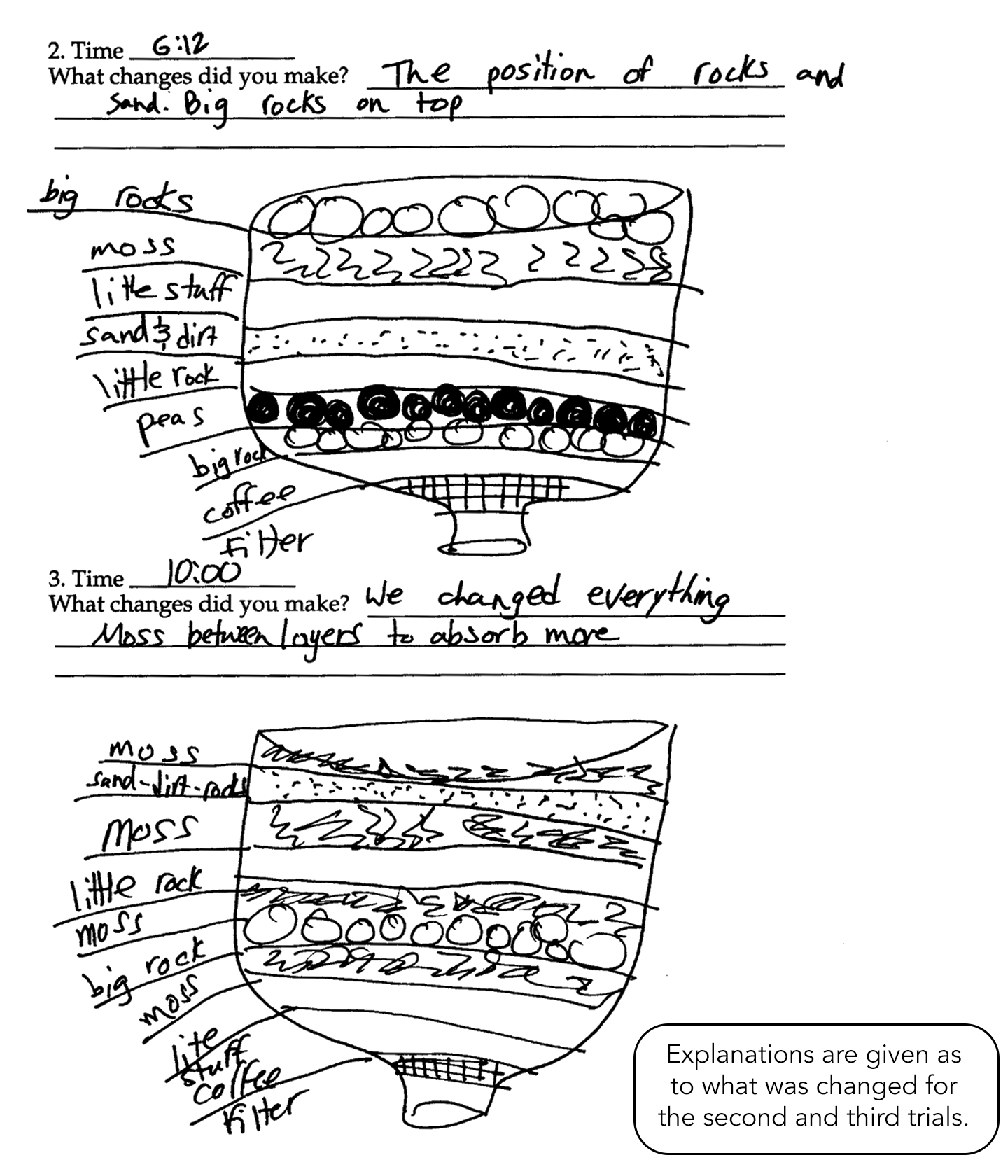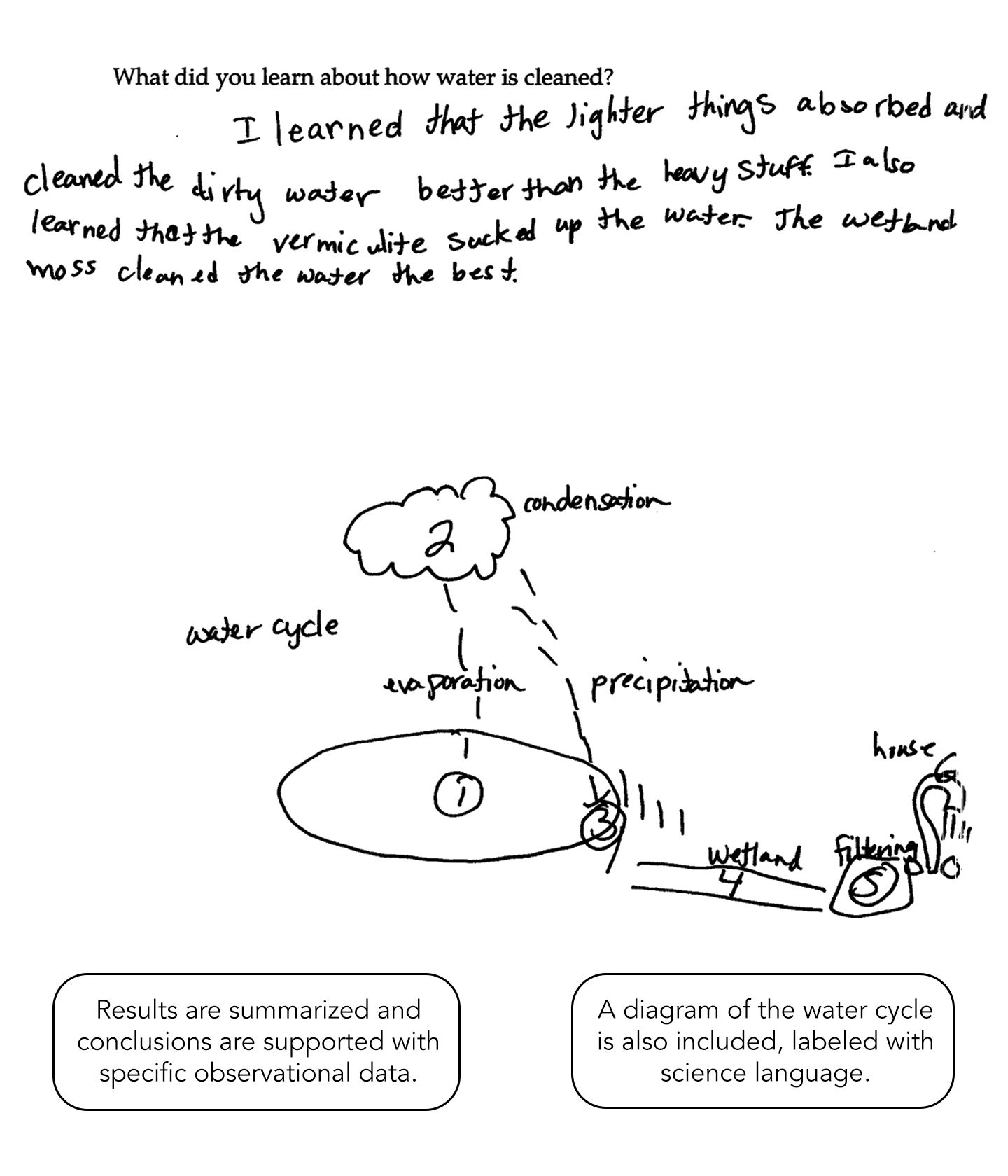Can You Build a Model Wetland?
Wetlands are important for their ability to clean dirty water by filtering it. In this investigation, you are going to build a model of a wetland.
You will be given some materials, including a funnel. You will select materials for your filtering system, build the model and conduct 3 trials to get a container of dirty water as clean as possible. You need to make a diagram of your setup, record the materials you place in the funnel, and observe and record what happens when the dirty water is put through your filtering system.
45 to 60 minutes.
Instructional Support Downloads
Suggested materials
We used clear plastic soda bottles, cut in half. A few weeks before doing the investigation, you might want to begin collecting some two-liter bottles. An easy way to cut the bottles is to place each bottle inside a box lid (to hold it steady for an even cut) and turn it slowly while holding a sharp utility knife in place. The top will be the funnel; the bottom will be the container that the water drains into. (An excellent resource book for using plastic soda bottles for science investigations is Bottle Biology, by Paul Williams, Mrill Ingram and Amy Kelley, published by Kendall Hunt.)
- A Mason jar half-filled with soil and half-filled with water
- 3 coffee filters so the materials don’t wash out the hole in the soda bottle
- A stopwatch
- Sphagnum moss
- Sand
- Rocks of different sizes
- Gravel, both fine and coarse
- Newspapers to cover the desks (large plastic garbage bags also work well for this)
- A plastic bucket to put all the materials in to give to students
Optional: You can also add leaves, food coloring, soap or oil, although, I did not. You could also add vinegar and check pH before and after filtering the water.
Students could put the materials from finest to roughest or vice versa in the filter. Materials that are randomly thrown into the funnels may begin to settle into layers, rough to fine, naturally. As students complete the second and third trials, the water should become cleaner. The diagram should label materials used in the filtering system. Times should be recorded for each trial and conclusions stated, based on observations.
This student’s solution is incomplete. It appears that only one trial was completed, as one time is recorded. A diagram is included but lacks appropriate labels. The student does not record any materials used to clean the filter. There is no explanation of what was observed.
Sample #1
This student’s solution is lacking in detail, although the task is completed. Only one time is recorded, though three trials are conducted. The student includes three labeled drawings. It appears that materials were changed each time, but no changes made between experiments are recorded, other than the labeling. The student attempts to demonstrate some understanding of the water cycle in the explanation, but the explanations are confusing. Some results are summarized, but conclusions are not supported by data or reasoning using scientific or design concepts.
Sample #2
This student’s solution is lacking in detail, although the task is completed. Times are recorded for three trials, but they are not precise (all times are the same). The student includes three labeled drawings. It appears that materials were changed each time, but no changes made between experiments are recorded or explained. Some results are summarized, but conclusions are not supported by data or reasoning using scientific or design concepts.
This student’s solution is complete. Precise times are recorded for three trials. The student includes three labeled drawings. Changes are included in the student's diagrams that show how they rearranged the layers of materials they tested. Results are summarized and conclusions are supported by specific data from observations (e.g., “mostly gets cleaned by moss, then vermiculite cleans second most”). The explanation also discusses the water cycle.
This student’s solution is complete. Precise times are recorded for three trials. The student includes three labeled and detailed drawings. Materials were changed each time, and changes made between experiments are recorded and explained (e.g., “Moss between layers to absorb more”). Results are summarized, and conclusions are supported by specific data from observations (e.g., “vermiculite sucked up the water,” and “wetland moss cleaned the water the best”). There is an additional diagram of the water cycle, which is clearly labeled using appropriate scientific language.


